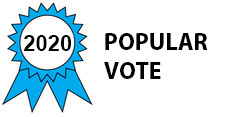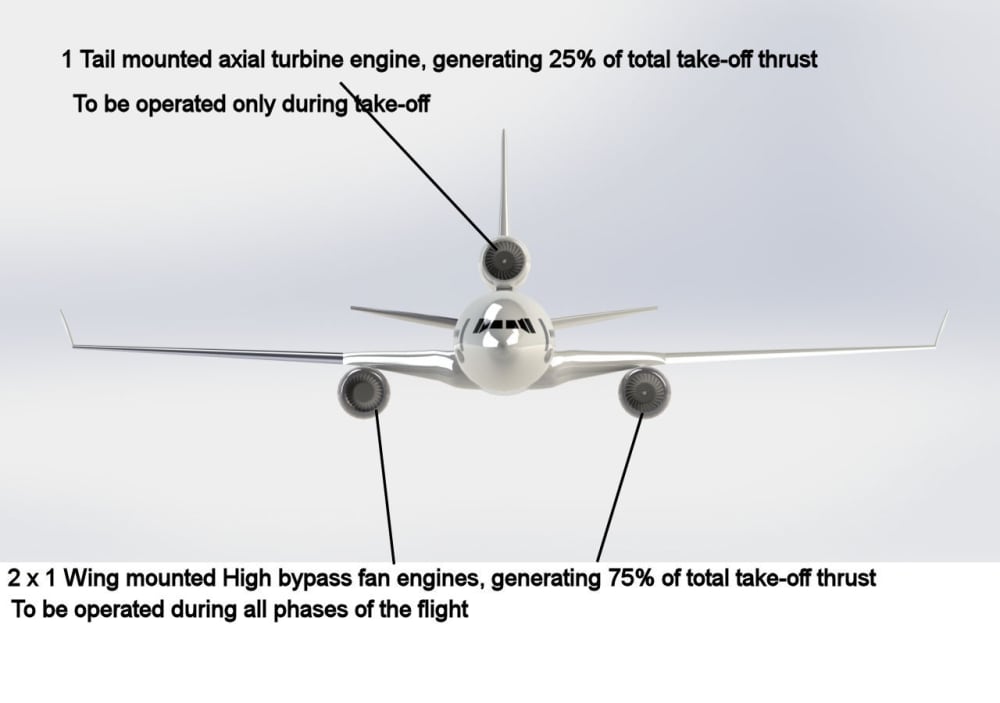
Now-a-days most of the mid-range & long-range aircraft have two high bypass fan turbine engines. About 70-75% of total thrust is produced by bypass fan & rest is produced by the expanding exhaust gas from turbine engine.
New power plant should be designed to use two high bypass fan turbine engines that would utilize all energy from turbine to drive high bypass fan only (something like turbo-prop engine). Thrust developed by these two engines should be the thrust required during cruise portion of the flight. Third engine should be installed in the tail (like DC10/Tri-star), which will generate thrust by the expanding exhaust gas from turbine engine (to reduce overall diameter of engine). Third engine thrust should be enough for aircraft take off when augmented by thrust of two high bypass fan turbine engines.
All three engines will be used during take off, climb & reaching cruising altitude.
After reaching cruise altitude third engine should be shut off & remaining flight continued with only two high bypass fan turbine engines.
During the total flight time of 15-16 hours (long range) / 6-9 hours (mid range) third engine will be used only for about 30 minutes. Two high bypass fan turbine engines will be using 90-100% of their full power during take off & cruise, which is approx. 95% of flight duration, will be utilized very efficiently.
Since both type of engines will be running at their full capacity they will be consuming least amount of fuel/thrust. Presently fuel cost is about 35-40% of aircraft operational cost. Hence it is expected to be a substantial saving for airlines if three engine idea is implemented.
-
Awards
-
 2020 Top 10 Most Popular
2020 Top 10 Most Popular
Like this entry?
-
About the Entrant
- Name:R Dandekar
- Type of entry:individual
- Patent status:none

